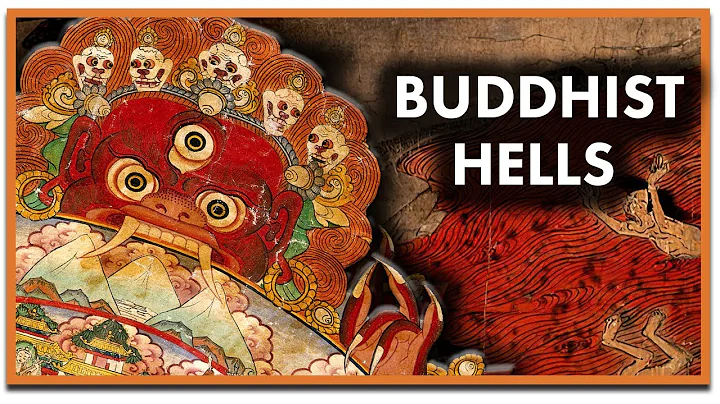There is a thousand-year-old temple in Luoyang, Henan. This is the first official temple on Chinese history . It is known as "Shiyuan ", which is the "ancestral temple" of Chinese Buddhist . It is Baima Temple .

"Yongping seeks the Dharma" Yuan Yimeng
When the Buddhist scriptures were first introduced to China, the place where they were placed was. White Horse Temple has experienced many ups and downs, witnessing the development and fall of Buddhism. Its construction originated from a magical dream of the Jin people...
It is said that one night in the seventh year of Yongping in the Eastern Han Dynasty (64), Emperor Ming of Han Liu Zhuang had a magical dream. After waking up, he couldn't figure it out, so he told the ministers to help him interpret the dreams. Emperor Ming of Han said that in his dream he met a six-meter-long golden man with dazzling light shining all over his body and a white aperture around his neck. The Jin man suddenly fell from the sky without wings, but he was able to fly in the hall. After hovering for a while, he flew into the sky and gradually disappeared into the west.
After hearing this, the ministers looked at each other, wondering who the golden man was soon glowing golden. A learned and talented minister in the court, Fu Yi, stood up and said, "Your Majesty, I have heard that there is a sage called Buddha in the Western Indian Kingdom. Legend has it that he shines golden light and can fly. When he attacked Huo Qubing , he seized twelve golden men worshipped to his slaves, and often burned incense and worshipped them. The whereabouts of the Jin people are still unknown. Maybe the golden man you dream of is the Buddha."

The Indian man mentioned by Fu Yi is India, the birthplace of Buddhism. Around the 6th century BC, Buddha Shakyamuni founded Buddhism. After Zhang Qian "Drilling the Sky" Western Regions and opening Silk Road , along this important channel connecting the East and the West, civilizations of the East and the West achieved mutual dissemination. Buddhism also gradually spread to the Western Regions countries in the late Western Han Dynasty , and many Indian monks spread Buddhism there.
Emperor Ming of Han became interested when he heard Fu Yi's explanation. In order to see the true image of the Jin man in his dream, he sent twelve people including Qin Jing and Cai Yan as envoys to the sky to seek Buddha statues and Buddhist scriptures.
Zhu Lan and Kashyapa Moteng spread the Buddhist teachings in White Horse Temple, and translated the "Forty-Two Chapters of Sutra" here to pass on it to later generations. This is the earliest existing Chinese translation of Buddhist scriptures. It is said that after the Buddhist scriptures were translated, Emperor Ming of Han treasured them in Lanhe ( Han Dynasty Central Archives and Classics Library). The Middle Land Buddhist scriptures passed down by later generations all use it as a blueprint, and Zhufalan and Kashyapa Moteng made great contributions to the spread of Buddhism in China and are regarded as the founder of Chinese Buddhism.
After Buddhism developed in China, Buddhist paintings gradually emerged. Some monks have learned the essence of Buddhist interpretation and paintings and have created many classic Buddhist interpretations and paintings. Ming Dynasty painter Ding Yunpeng is the representative of it. He devoted himself to the painting of Buddhist figures, and the Buddhas and interpreted the figures he painted were solemn and dignified. He drew the "White Horse Carrying Sutra" based on the story of "White Horse Carrying Sutra" and traced back the scene when Buddhism was first preached with a pious heart.

Ding Yunpeng (Ming Dynasty) "Picture of White Horse Carrying Sutra" Collection: In the Painting of Palace Museum in Taipei, China, Ding Yunpeng closely follows the theme of "Picture of White Horse Carrying Sutra", depicting the scene when two eminent monks came to the Central Plains with the Han envoys.
The background is a mountain road, with hills and rivers in the distance, and two big trees are lush with branches and leaves. Two monks are wearing gray and red monk robes, holding tin staff , and are talking with the messenger and his group while walking. They are ahead. A white horse was carrying Buddhist scriptures and other luggage, and there were four Hu Nu around the white horse. One person was carrying his luggage and leading the horse forward. A person next to the head of the horse was calling the prayer flag to look back. The person holding the prayer flag behind the horse was talking to the person carrying the luggage.
surface brushwork is crafted and delicate, with bright and bright colors, distinguishing the appearance characteristics and clothing characteristics of ethnic minorities in terms of characters, and portraying the compassionate and gentle vivid shapes of monks with more detailed brushwork. The delicate description of the rocks is quite interesting in ancient ways, and it looks elegant and elegant. In the main brown, the house cleverly highlights the images of monks and white horses with bright red and white colors, making them more magnificent and sacred.

White Horse Carrying Sutra Picture (Partial)
When Buddhism was introduced to China, it was not rich in strength and its influence was far less than that of Confucianism and Taoism. The believers were mainly concentrated in the upper class aristocrats. So at that time, there was a combination of "Buddhist" (Buddhist) Laozi " and sacrificed Buddha and Laozi together. There was also "Laozi's transformation into Hu" The legend - In the past, Lao Tzu rode a green ox out of Hangu Pass and disappeared after he disappeared. In fact, he went to the west to turn into a Buddha. He educated the "Hu people" in the Western Regions, Tianzhu and other places.
Later, along the Silk Road, monks from Tianzhu and Xicheng came to the Central Plains to preach and interpret scriptures continuously, which gradually developed Buddhism. Some monks from the Central Plains traveled west to seek Dharma. At the end of the Eastern Han Dynasty, the world was in chaos and life was in trouble. Confucian The general teachings of the Confucian The famous scholars at that time abandoned them, and metaphysics gradually emerged, creating conditions for the spread of Buddhism.
Since the White Horse Carrying Sutra, Buddhism has spread in China and taken root, and has merged with Chinese traditional culture to form Buddhist culture . Traditional Confucianism , Buddhism inherited from India, and Taoism , which is native to China, are integrated into each other, and are collectively called " Confucianism, Buddhism and Taoism " The three religions have had a profound and indelible impact on Chinese culture. This article is excerpted from "History of China in Famous Paintings"







![[English] Who Am I - Lecture 1 - Ven. Guan Cheng - DayDayNews](https://i.ytimg.com/vi/KU0fUs2It5o/hq720.jpg?sqp=-oaymwEcCNAFEJQDSFXyq4qpAw4IARUAAIhCGAFwAcABBg==&rs=AOn4CLDFpQUN_QwRfC7bmP4sUadq-RcYdg)
![A Moving Masterpiece 清明上河图 [English narration] - DayDayNews](https://i.ytimg.com/vi/kxff-4GktOI/hqdefault.jpg?sqp=-oaymwEcCOADEI4CSFXyq4qpAw4IARUAAIhCGAFwAcABBg==&rs=AOn4CLBtHGLeUpJNCYDJYnZTuISQ1N5Vag)


